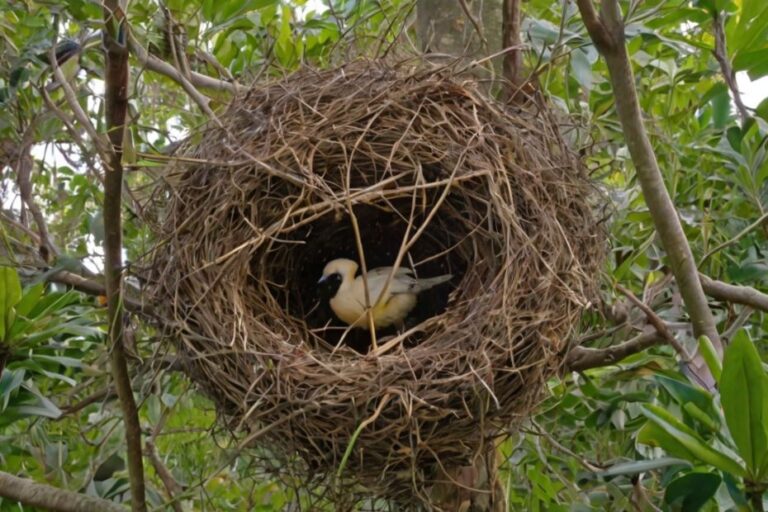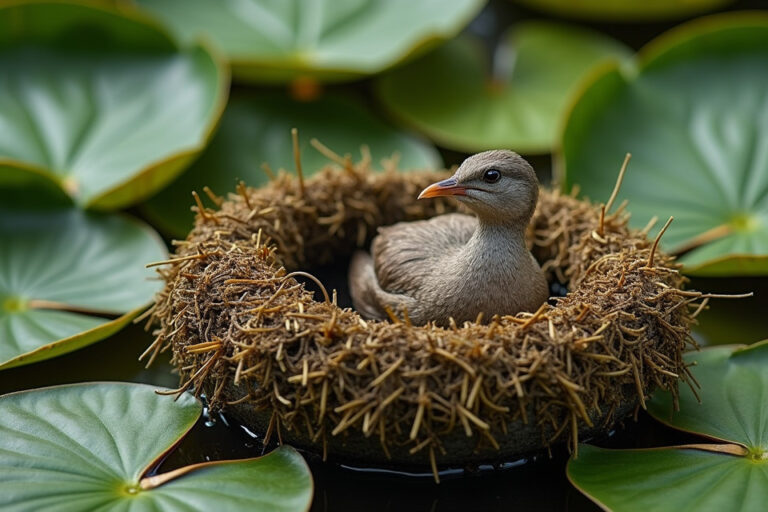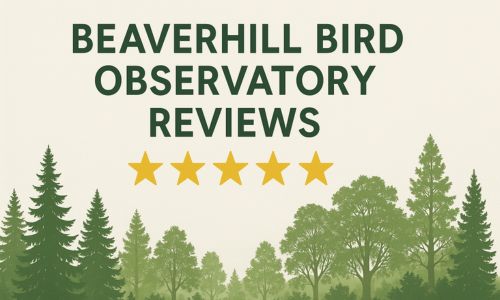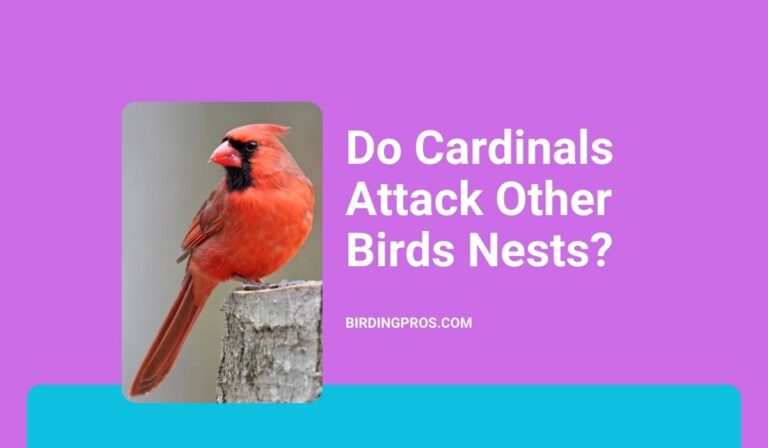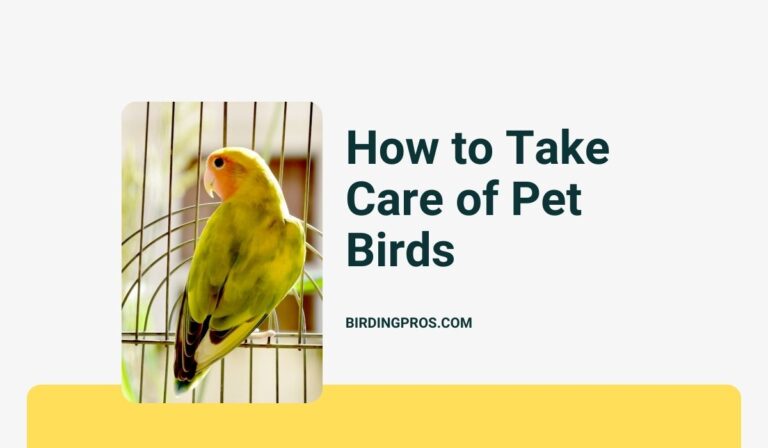Great Horned Owl Diet: Also Their Hunting Secrets
Great Horned Owls eat small mammals, birds, reptiles, and insects. They are versatile hunters with a diverse diet.
Great Horned Owls are among the most adaptable and widespread owl species in North America.
These powerful birds of prey have a diverse diet that includes small mammals like rabbits and rodents, birds, reptiles, and even insects. Their hunting skills are exceptional, often catching prey larger than themselves.
With their keen eyesight and acute hearing, they can locate and capture animals in complete darkness.
These nocturnal predators play a crucial role in controlling the populations of various species, maintaining ecological balance. Their diet helps highlight their importance in the ecosystem and their remarkable adaptability.
Table of Contents
Introduction To Great Horned Owls
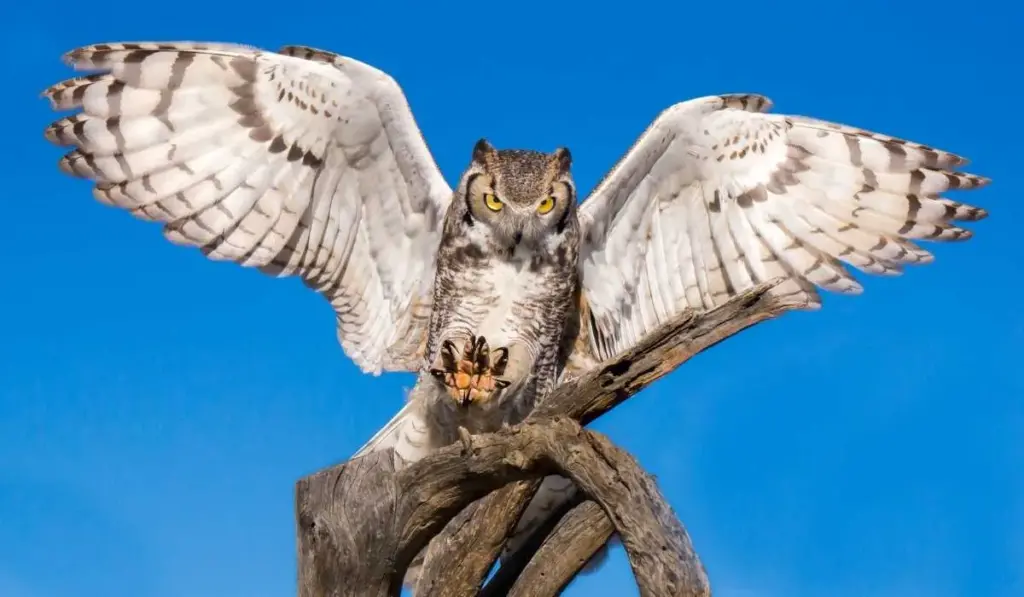
The Great Horned Owl is one of North America’s most iconic birds. Known for their striking appearance, these owls have feathered tufts on their heads. They are also known as “horns”. These powerful birds are skilled hunters with excellent vision and hearing.
Majestic Predators
Great Horned Owls are fierce predators. They have sharp talons and a strong beak. These owls hunt a wide range of prey. Their diet includes rodents, birds, and even skunks.
They are versatile hunters. They can catch prey both in the air and on the ground. Their sharp eyesight helps them spot prey from a distance. Their silent flight allows them to sneak up on their victims easily.
Habitat And Range
Great Horned Owls can be found in many habitats. They live in forests, deserts, and even urban areas. They are adaptable and can thrive in various environments.
These owls have a wide range. They are found across North and South America. From the Arctic to the tropics, they are highly adaptable birds.
| Habitat | Location |
|---|---|
| Forests | North America |
| Deserts | North America |
| Urban Areas | North America |
| Tropical Regions | South America |
Physical Adaptations
Great Horned Owls are amazing hunters. They have special features that help them catch their prey. Let’s explore their physical adaptations that make them excellent hunters.
Sharp Talons And Beak
The Great Horned Owl has sharp talons. These talons are like strong claws. They use them to grab and hold onto their prey. The owl’s talons can pierce through the skin of small animals. Their beak is also very sharp. They use their beak to tear meat into small pieces.
| Adaptation | Function |
|---|---|
| Sharp Talons | Grabbing and holding prey |
| Sharp Beak | Tearing meat into pieces |
Night Vision
Great Horned Owls have amazing night vision. They can see very well in the dark. This helps them hunt at night.
Their eyes are very large. Large eyes let in more light, helping them see better. They can spot small animals even in the dark.
Their eyes are also very sensitive to movement. This helps them catch fast-moving prey.
- Large eyes let in more light
- See well in the dark
- Sensitive to movement
Great Horned Owl Diet
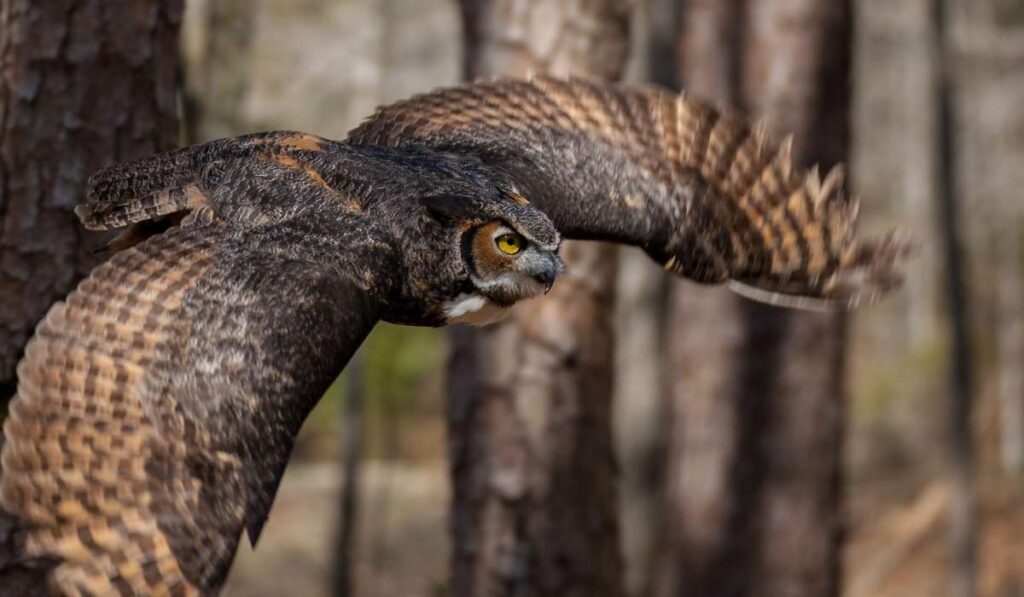
Great Horned Owls primarily eat small mammals, birds, and reptiles. They often hunt rabbits, mice, and skunks, displaying remarkable hunting skills.
These owls are adaptable, feeding on a diverse range of prey in their habitats.
Mammals
Great Horned Owls primarily feed on mammals such as rabbits and rodents.
Birds
They also hunt birds like crows and pigeons as part of their diet.
Reptiles And Amphibians
Reptiles and amphibians are occasional prey for Great Horned Owls.
Insects And Other Prey
In addition to larger prey, Great Horned Owls consume insects and other smaller animals.
Hunting Techniques
The Great Horned Owl is a skilled hunter. It uses unique methods to catch prey. Let’s explore these fascinating hunting techniques.
Silent Flight
The Great Horned Owl has special feathers. These feathers make its flight silent. The owl can sneak up on prey without a sound. This gives it an advantage over its prey.
Other birds and animals don’t hear the owl coming. The element of surprise is key. This silent flight helps the owl catch food easily.
Perch And Pounce
The owl often uses the perch and pounce method. It sits quietly on a high perch. It watches and waits for the right moment.
Once it spots prey, the owl swoops down. It pounces quickly and grabs the prey with its sharp talons. This method is very effective.
Aerial Pursuits
Sometimes the owl catches prey in mid-air. This is called an aerial pursuit. The owl flies high and fast. It chases birds and bats in the sky.
With powerful wings, it can turn quickly. This helps it catch fast-moving prey. Aerial pursuits show the owl’s agility and skill.
Read More: Can Lovebirds Eat Cherries? Detail Guidelines
Seasonal Variations In Diet
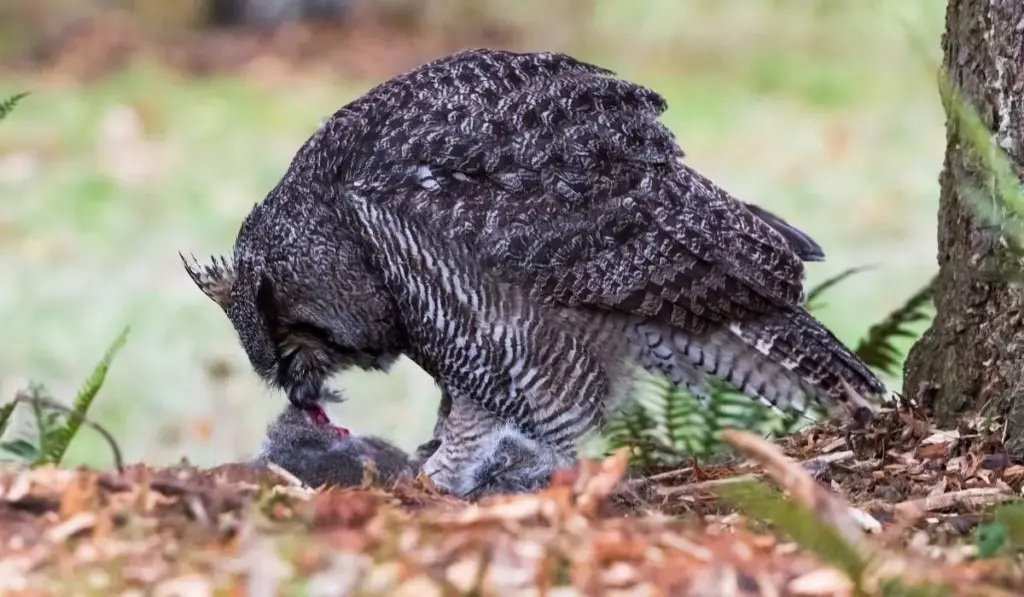
The diet of the Great Horned Owl changes with the seasons. These majestic birds adapt their hunting strategies to the availability of prey. Understanding these seasonal variations helps us appreciate their survival skills.
Winter Prey
During winter, the Great Horned Owl faces a scarcity of food. Snow covers the ground, making it hard to find prey. They rely on small mammals, especially rodents.
- Voles
- Mice
- Rabbits
These owls also hunt other birds. They catch ducks, geese, and smaller songbirds. Their powerful talons help them capture these prey even in harsh winter conditions.
Spring And Summer Diet
In spring and summer, food becomes more abundant. The Great Horned Owl expands its diet. They hunt a variety of prey, including:
- Squirrels
- Rats
- Reptiles
Their diet also includes insects and amphibians. They catch frogs, toads, and large insects like beetles. Their adaptability in diet helps them thrive in different habitats.
During these warmer months, they also hunt larger prey. They capture skunks, porcupines, and even young raccoons. This diverse diet ensures they get enough food for their young ones.
Impact On Ecosystem
The Great Horned Owl plays a crucial role in the ecosystem. These majestic birds of prey help maintain the balance of various animal populations.
Their diet and hunting habits have significant ecological impacts. Understanding these impacts is key to appreciating their role in nature.
Predator-prey Relationships
Great Horned Owls are apex predators. They hunt a variety of animals. Their prey includes small mammals, birds, and reptiles.
This predator-prey relationship keeps the ecosystem in check. Owls prevent overpopulation of certain species. This balance promotes biodiversity.
Owls hunt at night. This nocturnal behavior affects their prey’s activity. Small animals become more cautious after sunset.
This cautiousness influences their feeding and movement patterns. The presence of these owls shapes the behavior of many species.
Balancing Rodent Populations
Rodents make up a significant part of the owl’s diet. By preying on rodents, Great Horned Owls control their populations. This is vital for agricultural areas. Rodents can cause significant crop damage.
The table below summarizes how owls impact rodent populations:
| Rodent Type | Impact on Population |
|---|---|
| Mice | Significantly Reduced |
| Rats | Moderately Reduced |
| Voles | Controlled |
This balance prevents rodent outbreaks. Fewer rodents mean less crop and property damage. The Great Horned Owl is a natural pest controller. Their role is invaluable for farmers and gardeners.
Read More: Birds by the River: An Insider’s Guide
Interactions With Humans
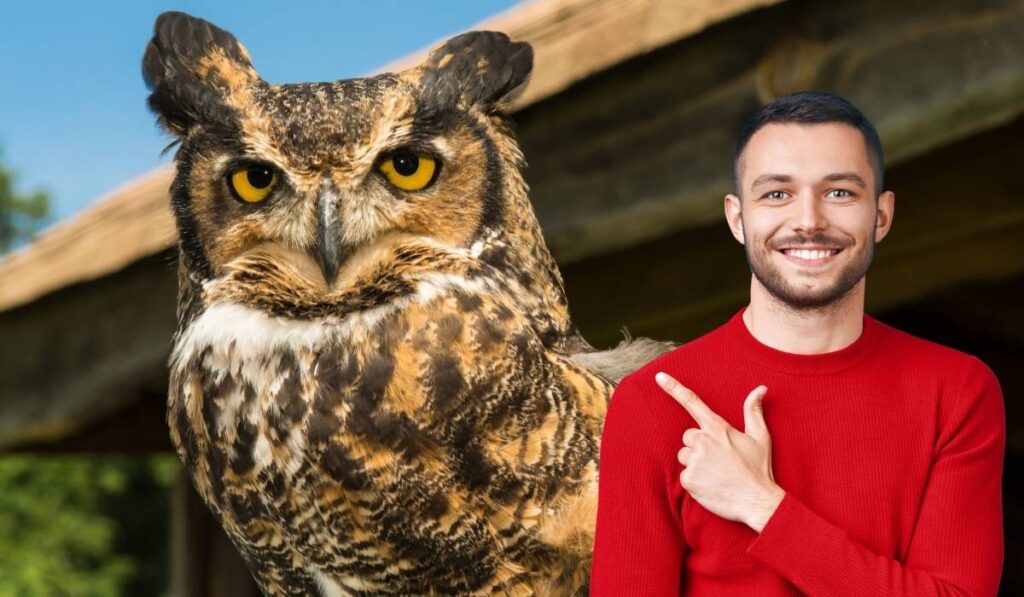
Great Horned Owls are known for their adaptability and diverse diet. Their interactions with humans reveal fascinating aspects of their behavior. Understanding these interactions can help in their conservation.
Urban And Rural Settings
In urban settings, Great Horned Owls often hunt in parks and gardens. They prey on rodents, birds, and sometimes small pets. Their presence helps control the rodent population.
In rural areas, these owls hunt in farmlands and forests. They target rabbits, squirrels, and other small mammals. Farmers appreciate their help in reducing pest populations.
Both settings offer unique challenges and opportunities for Great Horned Owls. Their ability to thrive in different environments showcases their adaptability.
Conservation Efforts
Conservation efforts play a crucial role in protecting Great Horned Owls. Habitat preservation is essential for their survival. Efforts to protect forests and wetlands help maintain their natural habitats.
Wildlife organizations work to educate the public about these owls. They promote coexistence and discourage harmful practices.
Reducing pesticide use is another important step. Pesticides can harm the owls’ food sources.
Rehabilitation centers care for injured or orphaned owls. They provide medical treatment and help them return to the wild. Such centers play a vital role in conservation.
| Conservation Strategy | Impact on Owls |
|---|---|
| Habitat Preservation | Maintains natural living environments |
| Public Education | Promotes coexistence and awareness |
| Reduced Pesticide Use | Protects food sources |
| Rehabilitation Centers | Cares for injured or orphaned owls |
FAQs On What Do Great Horned Owl Eat
What Is The Great Horned Owls Favorite Food?
Great horned owls primarily eat small mammals like rabbits and rodents. They also consume birds, reptiles, and insects. Their diverse diet helps them adapt to various environments.
What Is The Largest Prey For A Great Horned Owl?
The largest prey for a Great Horned Owl includes animals like raccoons and hares. These powerful birds can hunt even larger animals occasionally.
Do Great Horned Owls Hunt Every Night?
Yes, great horned owls hunt every night. They are nocturnal predators and actively search for prey during nighttime hours.
Do Great Horned Owls Eat Squirrels?
Yes, great horned owls eat squirrels. They are opportunistic hunters and prey on various animals, including rodents and birds. Their diet is diverse, making squirrels a common target.
What Do Great Horned Owls Eat?
Great horned owls primarily eat small mammals like rabbits, rodents, and birds. They also consume reptiles and insects.
Conclusion
Understanding the diet of Great Horned Owls helps us appreciate their role in the ecosystem. These majestic birds prey on a variety of animals, from rodents to larger mammals.
Their diverse diet showcases their adaptability and hunting prowess. Protecting their habitats, we ensure they continue to thrive and maintain ecological balance.


